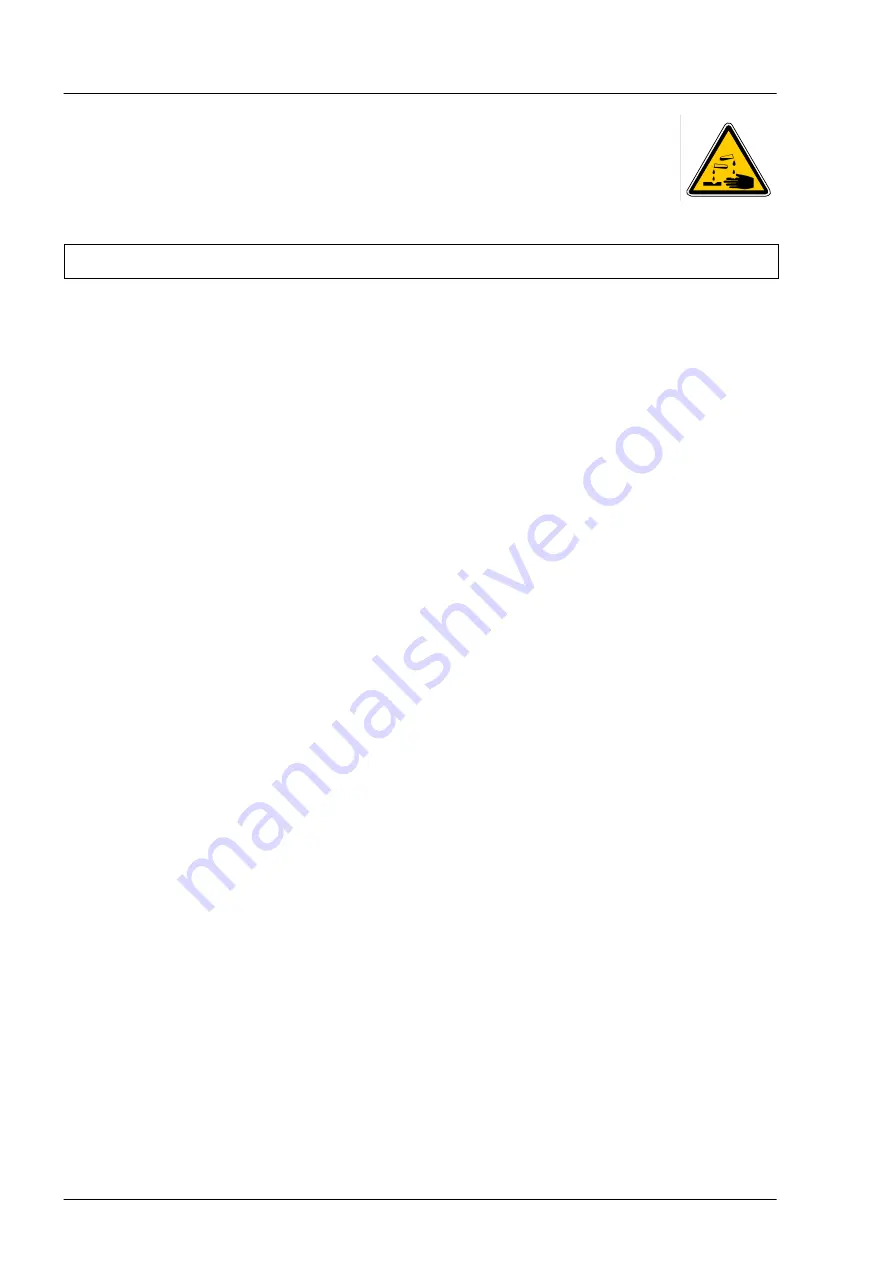
Safety regulations
10
D
Comply with the manufacturer's instructions when handling batteries.
Caution:
Accumulator acid is toxic and caustic. Battery gases are explosive.
2. Regulations designed to prevent damage to engine and premature wear
Do not demand more from the engine than it is able to supply in its intended application. Detailed informa
tion on this can be found in the sales literature.
If faults occur, find the cause immediately and have it eliminated in order to prevent more serious damage.
Use only genuine MAN spare parts. MAN will accept no responsibility for damage resulting from the install
ation of other parts which are supposedly “just as good".
In addition to the above, note the following points:
D
Never let the engine run when dry, i.e. without lube oil or coolant.
D
When starting do not use any additional starting aids (e.g. injection with starting pilot).
D
Use only MAN‐approved service products (fuel, engine oil, anti‐freeze and anti‐corrosion agent). Pay at
tention to cleanliness. The Diesel fuel must be free of water. See “Maintenance and care".
D
Have the engine maintained at the specified intervals.
D
Today modern components of diesel injection consist of high‐precision parts which are exposed to ex
treme stresses. The high‐precision technology requires the
utmost cleanliness
during all work on the
fuel system.
Even a particle of dirt over
0,2 mm
can lead to the failure of components.
D
Do not switch off the engine immediately when it is warm, but let it run without load for about 5 minutes
so that temperature equalization can take place.
D
Never put cold coolant into an overheated engine. See “Maintenance and care".
D
Do not add so much engine oil that the oil level rises above the max. marking on the dipstick.
Do not exceed the maximum permissible tilt of the engine.
Serious damage to the engine may result if these instructions are not adhered to.
D
Always ensure that the testing and monitoring equipment (for battery charge, oil pressure, coolant tem
perature) function satisfactorily.
D
It is advisable to switch off the engine if an alarm of any kind is displayed in the engine monitoring and
diagnostic system. If this is not possible for any reason, the engine should be run no faster than 1200
rpm until the fault is remedied, see page 24.
D
Comply with instructions for operation of the alternator. See “Maintenance and care".
D
Do not let the seawater pump run dry. If there is a risk of frost, drain the pump when the engine is
switched off.











































